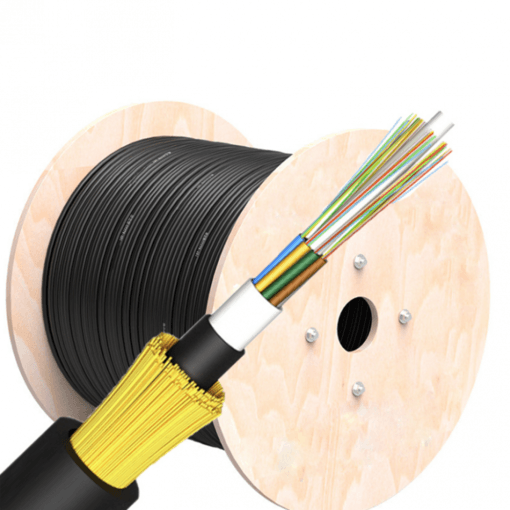Fibre 12 core OS2 (ADSS CABLE) Fibre Optic Cable
KSh 85.00 Original price was: KSh 85.00.KSh 72.00Current price is: KSh 72.00. excl. VAT
KEY FEATURES
- Diameter: 7mm
- Installation/Operation: -30°C to +60°C
- Storage: -40°C to +60°C
- Short term 20 x Diameter, Long term 10 x Diameter
- Water Resistant Construction
- UV Resistant
- Duct Grade – Rodent Resistant
Buy Online at Best Prices in Nairobi Kenya
12 cores fiber optic cable SM OS2 Specifications And Details
Overview
These tight buffered optical fibre cables have been designed specifically for internal and external applications. The singlemode fibre is G.652.D compliant low water peak grade and offers OS2 performance and OS1 backwards compatibility. These compact, lightweight cables are extremely flexible and are quick and easy to install.
The cables feature swellable reinforced yarns as common strength members and contain up to 24 color coded 900µm tight buffered fibers, all covered with a flame retardant, low smoke, zero-halogen outer sheath.
The print legend on the cable now includes information regarding the DOP number, Test and Classification of the cable for traceability
Features
- 12-Core Configuration: This cable features 12 optical fiber cores. The design of each core enables data transmission using OS2 (single-mode) optical fibers, which optimize long-distance transmission with minimal signal loss.
- ADSS (All-Dielectric Self-Supporting) Design: The ADSS design means that the cable does not require a metallic strength member. Instead, it uses a dielectric (non-metallic) central strength member, often made of Fiber Reinforced Plastic (FRP). This makes the cable lightweight and suitable for self-supporting aerial installations, such as along power lines or between poles.
- Low Water Peak: OS2 optical fibers typically have a low water peak characteristic. This minimizes signal attenuation in the water absorption spectral region, ensuring high performance and reliability, especially in damp or humid conditions.
- Outdoor Durability: The cable is designed to withstand harsh outdoor conditions. It is UV-resistant and often has a durable outer sheath that protects it from environmental factors, including sunlight exposure, extreme temperatures, and moisture.
- Long-Distance Transmission: OS2 optical fibers optimize long distance data transmission, making this cable suitable for applications that require data transmission over extended distances, such as long haul telecommunications and network backbones.
- 12-Core Fiber Count: The 12-core configuration provides flexibility for a range of applications. It supports multiple data channels or redundancy, making it ideal for network expansion and backup purposes.
- Fiber Tight Buffering: Typically, a tight buffer encloses each optical fiber core, providing additional protection against mechanical stresses and reducing the risk of fiber breakage during installation and operation.
- Anti-Twisting Elements: To prevent twisting and damage during installation, ADSS cables often include anti-twisting elements within the cable structure
See Datasheet

Be the first to review “Fibre 12 core OS2 (ADSS CABLE) Fibre Optic Cable” Cancel reply
You must be logged in to post a review.
Related products
Overhead Outdoor ADSS Fibre Optic Cable
Overhead Outdoor ADSS Fibre Optic Cable
Overhead Outdoor ADSS Fibre Optic Cable
Overhead Outdoor ADSS Fibre Optic Cable
Overhead Outdoor ADSS Fibre Optic Cable
Overhead Outdoor ADSS Fibre Optic Cable











Reviews
There are no reviews yet.